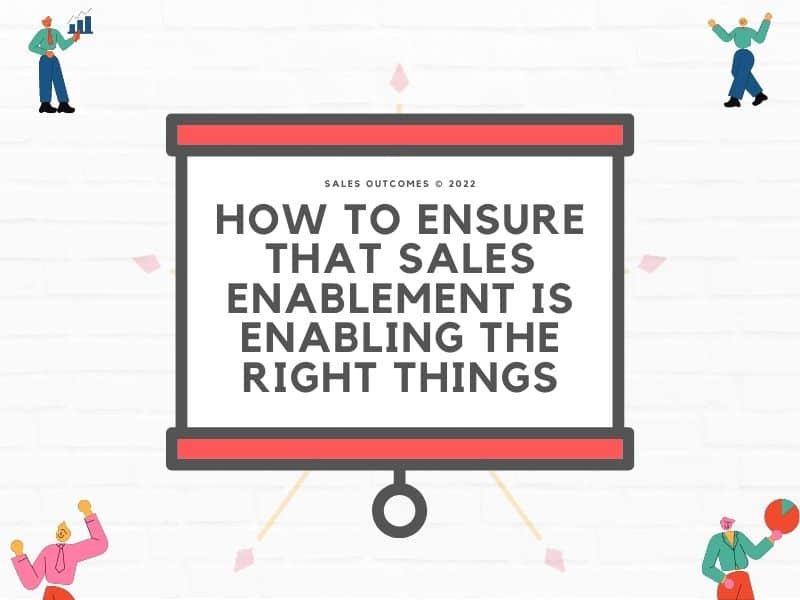How to Ensure that Sales Enablement is Enabling the Right Things

Sales enablement is critical for a successful sales organization, but it’s not always easy to ensure that sales enablement enables the right things.
Recent studies show that less than 40% of enablement initiatives met or exceeded objectives.
This blog post will explore three familiar sales enablement gaps to address to assist sales teams in doing the right things.
What’s Sales Enablement?
First, sales enablement is not just about making salespeople more productive with the tools, knowledge, and processes they need to be successful. It’s also about making sure they’re working on the right things.
Ultimately, enablement is about driving more revenue by making salespeople more effective. When done right, it’s a win-win for everyone involved.
Many enablement efforts focus on freeing salespeople from administrative tasks and reducing the time it takes to manage the CRM, create proposals, and process orders. Yes, helping the sales team make more time to sell is good, but it’s not the only thing.
Having more time to do the same job, in the same way, may not produce better results.
Common Sales Enablement Gaps
Targeting
Targeting the ideal accounts and contacts is essential to improving outcomes from initial conversations and advancing the sales process. Suppose salespersons spend time prospecting companies and individuals outside of the ideal customer profile; almost all sales productivity measures will drop.
Suppose salespeople aren’t spending at least 75% of their selling efforts against a vetted target account list. In that case, the enablement function needs to diagnose why and mobilize efforts to support the proper behavior.
Notably, a “full” sales pipeline does not equate with good targeting. A sales pipeline of less-than-ideal prospects doesn’t fool anyone. It’s a leading indicator of a gap in targeting skills.
Conducting effective initial discovery conversations
Conducting effective initial discovery conversations strengthens the qualification process and shapes the potential value proposition. A high percentage of discovery calls go nowhere due to poor discovery conversations. If discovery isn’t compelling, it leads to wasted time and effort for the prospect and salesperson. effective
Knowledge of discovery questions and process is helpful, but effective discovery requires skill and competencies developed by practice. Realistic role play and deal scenario coaching in a team-selling setting are ideal for preparing pursuit teams for effective discovery.
Traditional in-person training methods aren’t the answer to perfecting practical discovery skills. Virtual training methods accomplish much more at a fraction of the cost and time of conventional approaches.
Addressing the risk of change is a familiar blind spot for pursuit teams. Many sellers believe that selling their product’s features, benefits, and ROI will be sufficient for their success. While this is often true, it is, just as often, not true. Buyers can fear change and hate risk. And the fear of change and the introduction of risk can often counter the potential ROI that the sales team is projecting.
Until salespeople address the risk of change, customers will stick with the status quo, and “no decision” will continue to be the biggest competitor. To help customers buy, sales teams need to better understand the internal business case to inspire customers to step into change instead of back into safety.